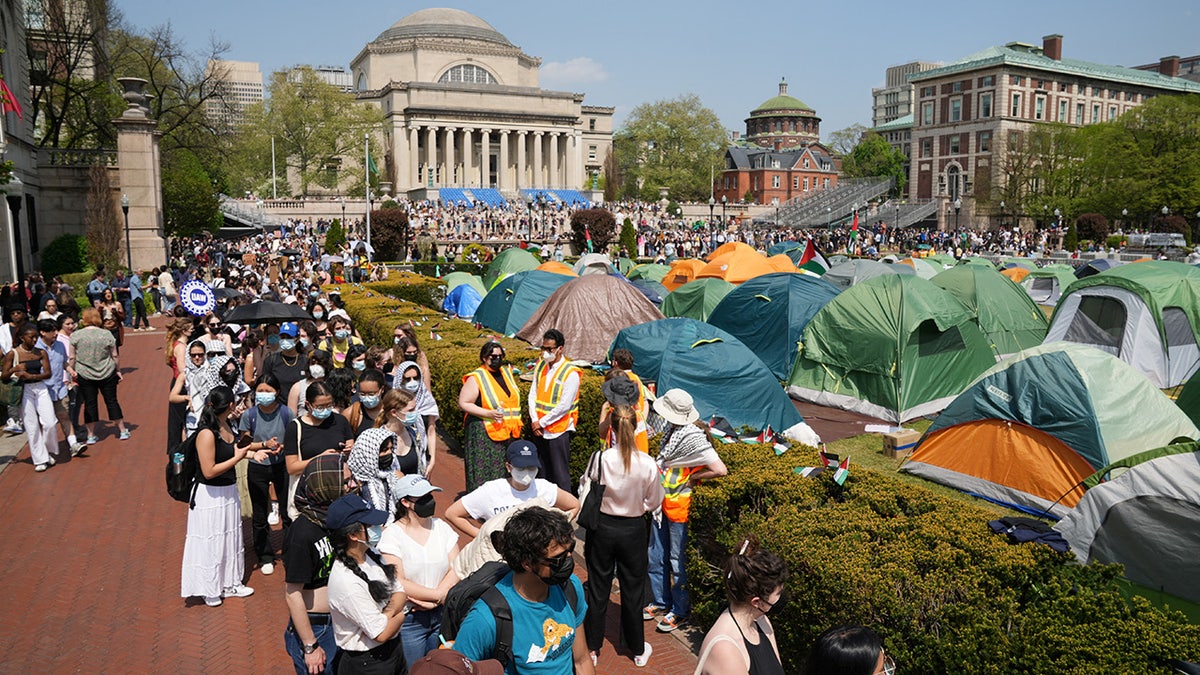Trump's Immigration Policies Face Significant Legal Setbacks

Table of Contents
The Travel Ban and its Legal Challenges
The Trump administration issued several executive orders restricting entry into the United States from several Muslim-majority countries, commonly referred to as the "travel ban" or "Muslim ban." These orders cited national security concerns as justification. The stated aim was to prevent the entry of individuals who posed a potential threat to the United States. However, the policies were met with immediate and widespread legal challenges.
-
Supreme Court Cases: The most significant legal battle centered around Trump v. Hawaii (2018), where the Supreme Court upheld a revised version of the travel ban. The Court acknowledged the president's broad authority in immigration matters but also considered the potential for religious discrimination.
-
Legal Arguments: Opponents argued that the travel ban violated the Establishment Clause of the First Amendment, prohibiting government endorsement of religion, and discriminated against Muslims. The administration countered that the ban was a legitimate exercise of its national security powers, targeting countries with known terrorist ties.
-
Supreme Court Ruling and Impact: The Supreme Court's ruling, while upholding the ban, acknowledged the concerns surrounding religious discrimination. This led to modifications in the ban's implementation. The ruling, however, did not fully resolve the underlying constitutional questions surrounding the president's power to restrict immigration based on nationality.
-
Ongoing Challenges: While the Supreme Court's decision largely settled the primary legal challenges, the travel ban remains a point of contention and continues to fuel debate regarding the balance between national security and constitutional rights in immigration policy. Related cases continue to be filed, challenging the ban’s application and its lasting impact.
DACA and the Fight for Deferred Action
The Deferred Action for Childhood Arrivals (DACA) program, established in 2012, offered temporary protection from deportation and work permits to undocumented immigrants who arrived in the U.S. as children (often referred to as "Dreamers"). The Trump administration attempted to terminate DACA, leading to protracted legal battles.
-
Legal Arguments: Supporters of DACA argued that its termination would be arbitrary and capricious, violating the Administrative Procedure Act. They also highlighted the humanitarian and economic consequences of deporting Dreamers. Opponents argued that DACA was an unconstitutional overreach of executive power, exceeding the president's authority.
-
Ongoing Legal Challenges: The legal fight over DACA continues, with ongoing court cases shaping its future. The Supreme Court has intervened multiple times, issuing rulings that have temporarily protected DACA recipients while the legal challenges play out.
-
Impact on Dreamers and Political Implications: The fate of DACA remains uncertain, with millions of Dreamers' lives hanging in the balance. The legal battles have profound political implications, highlighting the deep partisan divisions on immigration reform.
-
Statistics: As of 2023, there are hundreds of thousands of DACA recipients in the United States, contributing significantly to the economy and society.
The Wall and its Legal Ramifications
The construction of a border wall along the U.S.-Mexico border was a central promise of the Trump administration. However, the project faced numerous legal obstacles.
-
Lawsuits Challenging Construction: Numerous lawsuits challenged the wall's construction, citing issues of eminent domain – the government's power to seize private property for public use – and environmental concerns. Landowners argued that the government failed to adequately compensate them for their land.
-
Environmental Impact Assessments: Legal challenges also focused on the lack of adequate environmental impact assessments, arguing that the wall's construction would damage sensitive ecosystems and wildlife habitats. These challenges involved litigation concerning compliance with environmental protection laws like the National Environmental Policy Act (NEPA).
-
Funding Disputes: The funding mechanisms for the wall also faced legal challenges, with disputes over the allocation of federal funds and the use of emergency powers.
-
Effectiveness and Cost-Benefit Analysis: The legal challenges, combined with questions about the wall's overall effectiveness and the enormous cost involved, contribute to a broader debate about the efficacy of the wall as an immigration enforcement tool.
Increased Enforcement and Due Process Concerns
Increased immigration enforcement under the Trump administration led to numerous legal challenges regarding due process rights.
-
Family Separation and Detention Conditions: Cases highlighted concerns about the separation of families at the border and the conditions in immigration detention facilities, raising serious human rights concerns and legal questions about the treatment of detained immigrants.
-
Due Process Violations: Legal arguments focused on alleged due process violations in immigration proceedings, including the denial of legal representation and fair hearings.
-
Relevant Legislation and Court Decisions: Various court decisions and legislative actions attempted to address these concerns, but significant legal questions remain regarding the balance between national security and individual rights in immigration enforcement.
Conclusion
Trump's immigration policies faced, and continue to face, significant legal setbacks across multiple fronts. From the travel ban to DACA and the border wall, court challenges have consistently questioned the legality and constitutionality of various initiatives. These legal battles underscore the complex interplay between immigration policy, national security, and individual rights. Understanding the outcomes of these cases is crucial for anyone seeking to comprehend the evolution of U.S. immigration law and the ongoing debate surrounding Trump's immigration policies and their lasting impact. Further research into these specific cases and their implications will shed more light on this crucial aspect of American politics and legal history.

Featured Posts
-
 Columbia University Student Blocked From Sons Birth By Ice
Apr 24, 2025
Columbia University Student Blocked From Sons Birth By Ice
Apr 24, 2025 -
 Las Vegas Airport Faa Scrutinizes Collision Risk
Apr 24, 2025
Las Vegas Airport Faa Scrutinizes Collision Risk
Apr 24, 2025 -
 The Danger Of Skipping Mammograms Tina Knowles Story And Breast Cancer Prevention
Apr 24, 2025
The Danger Of Skipping Mammograms Tina Knowles Story And Breast Cancer Prevention
Apr 24, 2025 -
 The Crucial Role Of Middle Managers In Boosting Company Performance And Employee Satisfaction
Apr 24, 2025
The Crucial Role Of Middle Managers In Boosting Company Performance And Employee Satisfaction
Apr 24, 2025 -
 Mammoth And Noah Child Actress Sophie Nyweide Dies At 24
Apr 24, 2025
Mammoth And Noah Child Actress Sophie Nyweide Dies At 24
Apr 24, 2025
